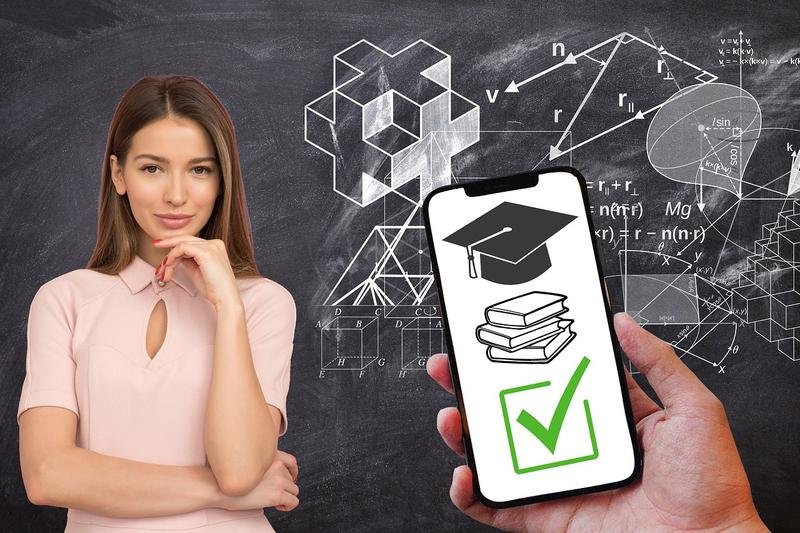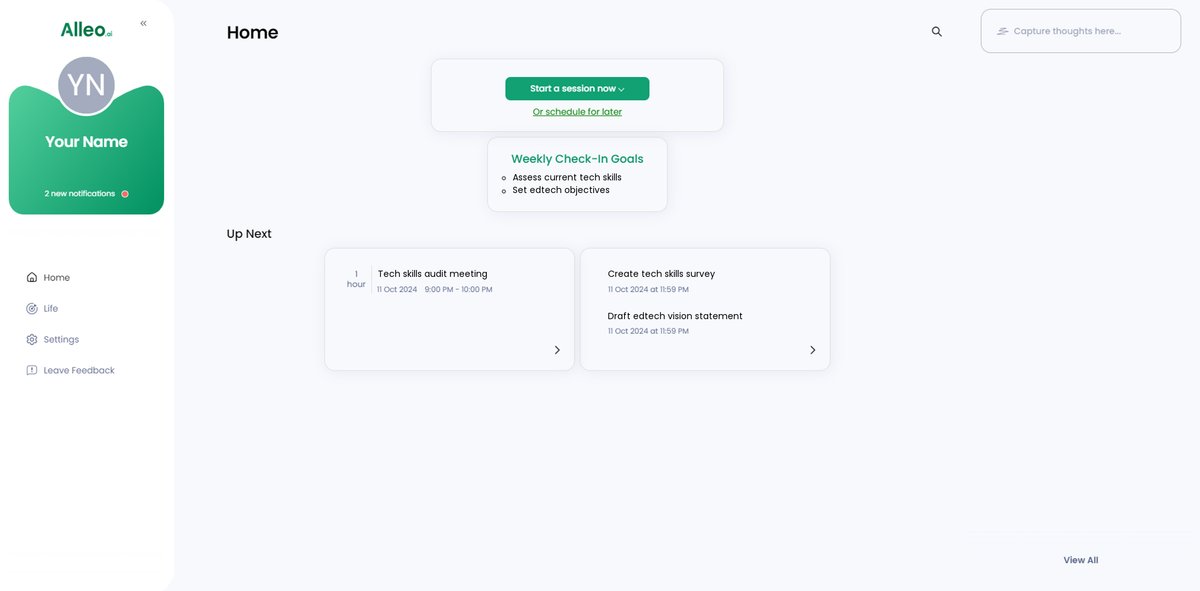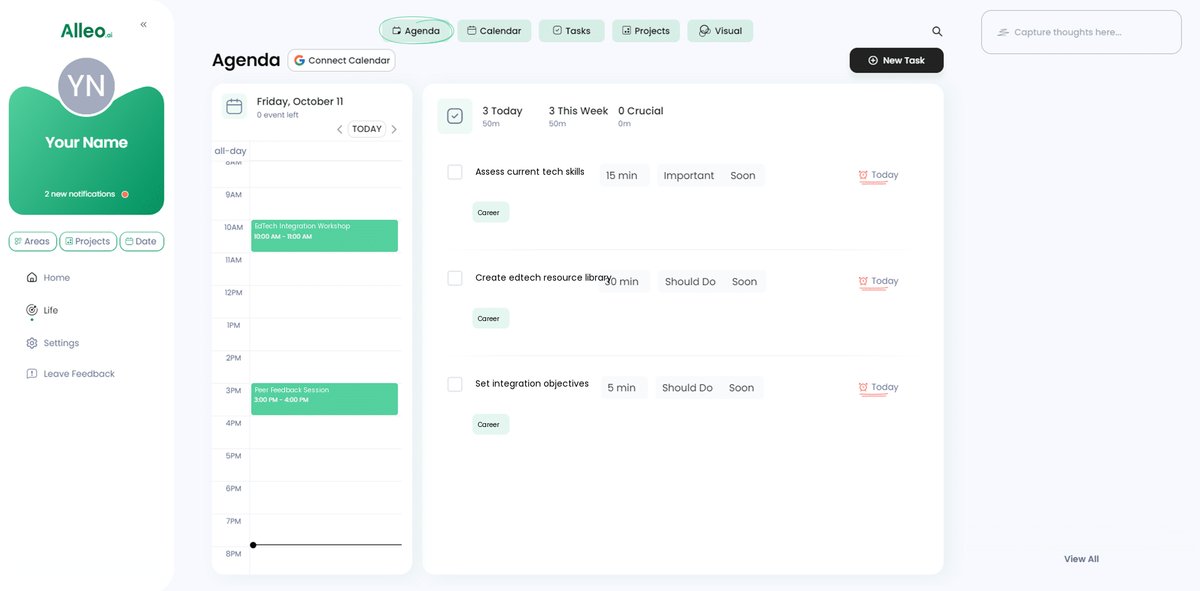7 Proven Strategies for Teachers Integrating EdTech Tools in Curriculum Planning
Are you struggling to integrate new educational technology tools into your curriculum while managing resources effectively? Integrating edtech into curriculum can be a challenging process for many educators.
As a life coach, I’ve helped many educators navigate these challenges. In my experience working with teachers, I often see the struggle to balance technology integration with traditional teaching methods and implement effective blended learning strategies.
In this article, you’ll discover specific strategies to seamlessly integrate edtech tools into your curriculum planning. We will cover assessing current tech skills, setting clear objectives, selecting the right digital tools for lesson planning, and more. These tips will help you with curriculum development with edtech and create a 21st century classroom technology environment.
Let’s dive in to explore how integrating edtech into curriculum can transform your teaching approach.

Tackling EdTech Integration Challenges
Integrating edtech into curriculum can be overwhelming. Many educators face the challenge of balancing traditional teaching methods with new educational technology integration tools.
This often results in frustration and inefficiencies.
Effective resource management and peer collaboration are critical for curriculum development with edtech. However, coordinating these aspects while introducing new technology can be daunting.
In my experience, people often find the lack of structured guidance a significant hurdle in 21st century classroom technology adoption. Without clear objectives and support for teacher professional development in technology, the integration process can feel like navigating uncharted waters.
Let’s address these challenges head-on.

Roadmap to Effective EdTech Integration
Overcoming this challenge requires a few key steps. Here are the main areas to focus on to make progress in integrating edtech into curriculum:
- Assess current tech skills and tools in use: Conduct a tech skills audit and inventory existing educational technology integration tools.
- Set clear objectives for edtech integration: Define specific learning goals and establish a clear vision for curriculum development with edtech.
- Choose tools aligned with learning goals: Research and select appropriate digital tools for lesson planning; pilot them.
- Plan collaborative edtech training sessions: Organize professional development workshops and peer mentoring programs for teacher professional development in technology.
- Create shared resource library for edtech tools: Develop a centralized repository for 21st century classroom technology resources.
- Implement regular peer feedback on tech use: Schedule peer review sessions and create a feedback loop with students using interactive learning platforms.
- Develop flexible tech integration timelines: Create phased implementation plans for integrating edtech into curriculum and monitor progress.
Let’s dive in!
1: Assess current tech skills and tools in use
Understanding the current tech skills and tools in use is crucial for effectively integrating edtech into curriculum.
Actionable Steps:
- Conduct a tech skills audit among staff using self-assessment tools. Create an online survey to gauge current tech proficiency and track survey completion rates for educational technology integration.
- Inventory existing edtech tools and their usage. List all currently used tools, categorize them based on frequency and effectiveness, and identify underused tools with potential benefits for curriculum development with edtech.
Explanation:
These steps are vital to identify strengths and areas for improvement. Knowing the current status of tech skills and tools helps tailor training and resource allocation for integrating edtech into curriculum.
Additionally, it ensures that integration efforts focus on enhancing existing strengths. According to Wilson College, assessing current tech skills is a foundational step in successful technology integration.
Key benefits of conducting a tech skills audit:
- Identifies skill gaps within the staff for teacher professional development in technology
- Guides personalized professional development for 21st century classroom technology
- Informs strategic planning for integrating edtech into curriculum
Let’s move on to setting clear objectives for edtech integration.

2: Set clear objectives for edtech integration
Setting clear objectives for integrating edtech into curriculum is essential for aligning technology use with educational goals and ensuring a cohesive approach to curriculum development with edtech.
Actionable Steps:
- Define specific learning goals that the edtech tools should support. Align objectives with curriculum standards and student needs, considering personalized learning with edtech.
- Establish a clear vision for educational technology integration. Create a mission statement for edtech use and develop key performance indicators (KPIs) to track progress in the 21st century classroom technology landscape.
- Communicate the vision to all stakeholders. Ensure that everyone involved understands the objectives and their role in achieving them, promoting collaborative teaching with digital resources.
Explanation:
These steps are crucial for ensuring that integrating edtech into curriculum is focused and effective. By defining clear objectives, you can measure progress and make necessary adjustments to your blended learning strategies.
According to ISTE, setting clear objectives helps in better planning and resource allocation, leading to more successful technology adoption and teacher professional development in technology.
This clarity will pave the way for a more structured and collaborative approach to integrating new tools and interactive learning platforms into the curriculum.

3: Choose tools aligned with learning goals
Choosing tools that align with your learning goals is crucial for ensuring that technology enhances rather than disrupts your curriculum when integrating edtech into curriculum.
Actionable Steps:
- Research and evaluate tools: Look into digital tools for lesson planning that support your learning objectives. Use user reviews and case studies to assess their effectiveness in curriculum development with edtech.
- Pilot selected tools: Implement the chosen educational technology integration tools in a small-scale setting, such as a single class or grade level. Collect feedback and performance data to evaluate their impact on personalized learning with edtech.
- Involve teachers in the selection process: Get teachers’ input on the interactive learning platforms to ensure buy-in and relevance. Their experiences and insights can guide the final selection for 21st century classroom technology.
Explanation:
These steps are essential for aligning edtech tools with educational goals. By piloting tools and involving teachers, you ensure a practical and collaborative approach to integrating edtech into curriculum.
According to ISTE, involving educators in the selection process increases the likelihood of successful adoption and effective use of technology, supporting teacher professional development in technology.
This structured method helps maintain focus on achieving your educational objectives through blended learning strategies and data-driven instruction using technology.

4: Plan collaborative edtech training sessions
Organizing collaborative edtech training sessions is crucial for ensuring that teachers are well-equipped to integrate educational technology into curriculum effectively.
Actionable Steps:
- Schedule regular professional development workshops: Set up monthly training sessions throughout the school year to address ongoing tech integration needs and support curriculum development with edtech.
- Facilitate peer mentoring programs: Pair tech-savvy teachers with those who need support in integrating edtech into curriculum. Monitor progress and encourage sharing best practices for using digital tools for lesson planning.
- Create a feedback loop: Collect and analyze participant feedback after each session to continually improve training content and enhance blended learning strategies.
Explanation:
These steps are essential for building a supportive learning environment. Regular workshops and peer mentoring ensure continuous skill development in 21st century classroom technology.
According to ISTE, effective professional development helps educators stay current with technology trends and improves teaching outcomes when integrating edtech into curriculum.
This approach fosters a culture of collaboration and continuous improvement in educational technology integration.

5: Create shared resource library for edtech tools
Creating a shared resource library for edtech tools fosters collaboration and ensures accessibility to valuable resources when integrating edtech into curriculum.
Actionable Steps:
- Develop a centralized online repository: Use platforms like Google Drive or a school LMS to create a shared resource library for educational technology integration. Track uploads and usage statistics to monitor engagement in curriculum development with edtech.
- Encourage staff contributions: Set up a system for teachers to share lesson plans and tips using digital tools for lesson planning. Recognize and reward active contributors to promote collaborative teaching with digital resources.
Explanation:
These steps matter because a shared resource library streamlines access to edtech tools and encourages continuous learning, supporting teacher professional development in technology.
According to Wilson College, having a centralized repository is essential for effective technology integration. It ensures that all teachers have access to the same high-quality resources, fostering a collaborative environment in the 21st century classroom technology landscape.
Key components of an effective shared resource library:
- User-friendly organization system for integrating edtech into curriculum
- Regular updates and maintenance of interactive learning platforms
- Integration with existing school platforms for personalized learning with edtech
This shared library will be a cornerstone of your tech integration strategy, supporting blended learning strategies and data-driven instruction using technology.

6: Implement regular peer feedback on tech use
Incorporating regular peer feedback on integrating edtech into curriculum is vital for continuous improvement and successful integration.
Actionable Steps:
- Schedule bi-monthly peer review sessions: Set up regular meetings for teachers to discuss and review educational technology integration, documenting feedback and action steps.
- Conduct student surveys: Gather student input on the effectiveness of digital tools for lesson planning. Analyze the results to identify areas for improvement in curriculum development with edtech.
- Create a feedback loop: Use feedback to refine blended learning strategies. Adjust teaching methods based on peer and student input to enhance personalized learning with edtech.
Explanation:
These steps matter because they ensure continuous improvement and alignment with 21st century classroom technology goals. Regular sessions and feedback loops foster a culture of collaboration and innovation in teacher professional development in technology.
According to ISTE, effective feedback mechanisms lead to better outcomes and more efficient tech use in data-driven instruction using technology.
Regular peer feedback is crucial for refining your edtech integration strategies and achieving better results in collaborative teaching with digital resources.

7: Develop flexible tech integration timelines
Developing flexible tech integration timelines is essential for managing the pace of change and ensuring smooth transitions when integrating edtech into curriculum.
Actionable Steps:
- Create phased implementation plans: Break down educational technology integration into manageable phases. Set milestones and deadlines for each phase to track progress in curriculum development with edtech.
- Regularly review and adjust timelines: Monitor progress and gather feedback to adjust timelines as needed. Allow flexibility to address unforeseen challenges in 21st century classroom technology adoption.
- Communicate timelines to all stakeholders: Ensure that everyone involved understands the phases and any adjustments. Keep communication clear and consistent about integrating edtech into curriculum.
Explanation:
These steps matter because they provide a structured yet adaptable approach to tech integration. By phasing implementation and adjusting timelines based on feedback, you can ensure a smoother transition for blended learning strategies.
According to ISTE, flexible planning helps address challenges promptly and keeps the integration process on track for effective curriculum development with edtech.
Benefits of flexible tech integration timelines:
- Allows for adaptation to unexpected obstacles in educational technology integration
- Reduces stress on staff during implementation of digital tools for lesson planning
- Improves overall success rates of tech adoption and teacher professional development in technology
This approach ensures that your efforts in integrating edtech into curriculum remain effective and responsive to changing needs in personalized learning with edtech.

Partner with Alleo for Seamless EdTech Integration
We’ve explored the challenges of integrating edtech into curriculum and how to overcome them. But did you know you can work directly with Alleo to make this process of educational technology integration easier and faster?
Set up an account with Alleo and create a personalized plan for curriculum development with edtech. The Alleo AI coach provides tailored coaching support for integrating edtech into curriculum, just like a human coach.
Enjoy a free 14-day trial with no credit card required.
Alleo helps you assess tech skills, set objectives, and choose the right digital tools for lesson planning. The coach follows up on your progress with blended learning strategies and handles changes.
You’ll stay accountable with text and push notifications, supporting your teacher professional development in technology.
Ready to get started for free with integrating edtech into curriculum?
Let me show you how!
Step 1: Logging In or Creating an Account
To begin your journey with Alleo’s AI coach for seamless edtech integration, simply Log in to your account or create a new one to access personalized guidance and support.

Step 2: Choose “Building better habits and routines”
Click on “Building better habits and routines” to start developing consistent practices for integrating edtech tools, which will help you overcome the challenges of balancing technology with traditional teaching methods and manage your resources more effectively.

Step 3: Select “Career” as Your Focus Area
Choose “Career” as your focus area in Alleo to address your edtech integration challenges head-on, aligning perfectly with your goal of enhancing your teaching methods and curriculum development skills.

Step 4: Starting a coaching session
Begin your journey with Alleo by initiating an intake session, where you’ll work with the AI coach to set up a personalized plan for integrating edtech tools into your curriculum.

Step 5: Viewing and managing goals after the session
After your coaching session, check the Alleo app’s home page to view and manage the goals you discussed, allowing you to track your progress in edtech integration and adjust your objectives as needed.

Step 6: Adding events to your calendar or app
Use Alleo’s calendar and task features to add important edtech integration milestones and training sessions, allowing you to easily track your progress and stay on schedule as you implement new tools in your curriculum.

Bringing It All Together
To wrap things up, we’ve explored the strategies to effectively integrate edtech into your curriculum. We’ve discussed assessing tech skills, setting clear objectives, and choosing the right tools for educational technology integration.
Remember, it’s all about collaboration and continuous improvement in curriculum development with edtech.
You don’t have to do this alone when integrating edtech into curriculum.
Alleo can guide you every step of the way in your 21st century classroom technology journey.
Try our AI coach for tailored support and seamless integration of digital tools for lesson planning.
Empower your teaching with the right tools for personalized learning with edtech.
Take the first step today in integrating edtech into curriculum.
Sign up for Alleo’s free trial and transform your classroom experience with interactive learning platforms.